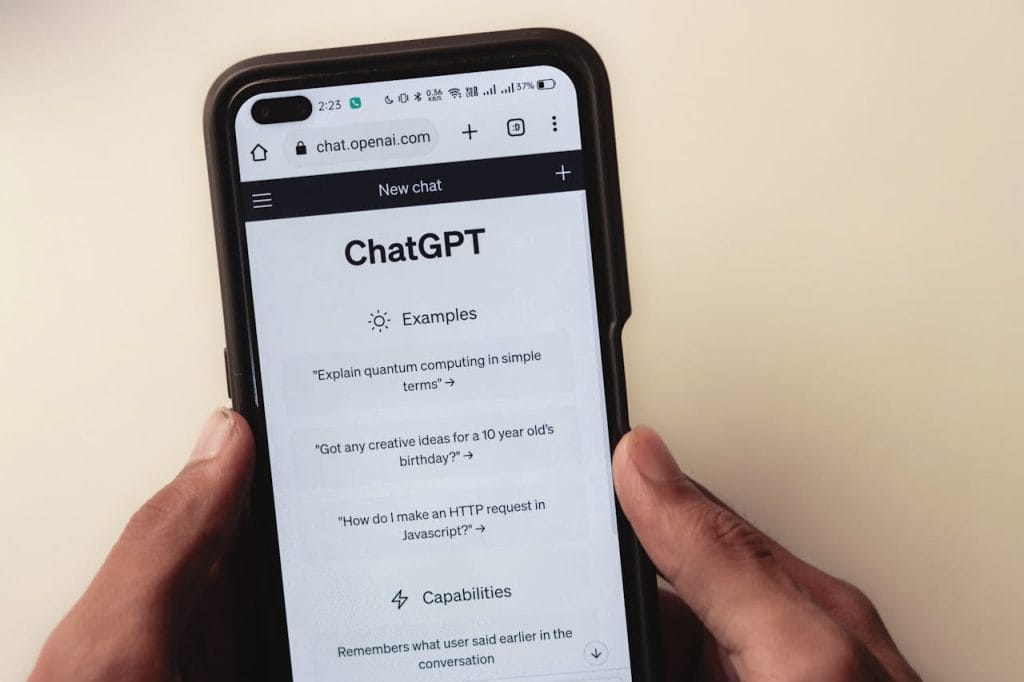Monetizing Chat GPT isn’t just a trend in 2025 — it’s a strategic advantage for solo founders, thanks to the versatility of OpenAI’s GPT-4.5 model. Which now supports everything from visual input to advanced code generation. This has sparked an AI gold rush: with over 100 million users and ChatGPT’s ecosystem projected to hit ~$1 billion in annual revenue by 2024. Founders of all skill levels are asking how to build with AI and monetize Chat GPT. In fact, one maker reported building a full SaaS app in 30 days with ChatGPT. Something that would have taken a small team weeks before. In short, solo founders can now act as their own “tech teams,” using prompts to create products that generate revenue.
GPT-4.5 is designed for collaboration: it understands subtle cues, remembers conversational context better, and even accepts images or files as input. According to OpenAI, it “supports key features like function calling, structured outputs, [and] streaming,” and excels at writing, brainstorming, and multi-step tasks like coding. In practice, this means a founder can validate an idea, hand GPT-4.5 a specification. And instantly get draft code, text, or designs. The AI handles the heavy lifting while the entrepreneur guides and refines the output. One seasoned product manager even notes: “generic code that does the job is the job” for an MVP. You don’t need a perfect codebase to build a valuable business.
A Lean Launch Playbook
Before diving into AI tools, solo founders should follow a lean startup approach: validate first, build second. A proven playbook looks like this:
- Build a simple landing page or explainer. Use Carrd, Webflow or even a blog post to outline your idea.
- Collect interest. Add a “join the waitlist” or survey to gauge demand for your AI solution.
- Test with ads or outreach. Spend a small budget (even $50 on Facebook/Google) to see if real users sign up.
- Iterate to an MVP. If there’s interest, build a no-code/AI prototype: use tools like Bubble.io, Zapier, or GPT-4.5’s API to launch the simplest workable product.
These steps force you to focus on real user needs (remember the key to success is identifying your audience’s needs) before writing a single line of code. For example, one solo founder validated his idea by running ads and collecting emails before using an AI-assisted development toolkit (Buildpad for idea-scoring and Cursor for coding). And later turned that MVP into a $500–$2,000/month subscription app. By combining lean validation with AI tools, founders can quickly go from concept to income with minimal upfront cost.
Productized AI Services and Content
One of the fastest paths to cash is productized services powered by GPT. In a productized model you offer a fixed-scope AI-driven service at a set price. For example, a solopreneur might sell “5 blog posts/month” content packages. ChatGPT drafts the posts, you add personal edits, and the client pays $X per month. This leverages GPT as a co-writer. As one guide puts it, using ChatGPT for content generation is like having “a co-writer, researcher, and editor all rolled into one. A blogger could prompt GPT to draft an entire month’s worth of SEO-rich articles in minutes. Then polish them for voice and publish. The higher volume and quality can dramatically boost traffic and ad/sponsorship revenue.
Other service ideas include AI-assisted copywriting or marketing bundles. For instance, you could offer social media post packages. GPT-4.5 generates captions, ad copy, or product descriptions tailored to a brand. Because the deliverable is pre-defined, it’s easy to scale and price. Some founders even build prompt-based businesses: they craft high-value prompt templates or GPT workflows and sell them on marketplaces (like PromptBase) or directly to businesses. In essence, the prompt becomes the product. The key across these models is identifying tasks where GPT provides real leverage – and packaging them into a compelling, straightforward offer for clients.
AI-Powered SaaS Products
GPT-4.5 also enables solo developers to launch lightweight SaaS apps or plugins. Think of offering an AI tool on a subscription basis. For example, consider an AI writing assistant: instead of competing with ChatGPT, niche it to an industry. You could build a “Real Estate Listing Generator” that churns out catchy property descriptions from a few bullet points, or a “Legal Doc Drafter” that drafts simple contracts. These are built on GPT-4.5 (or Claude/OpenAI APIs) with a simple web app front-end.
Another idea is an AI-powered outreach platform. Sales reps spend hours on cold emails – GPT can automate that. A solo founder created a tool that analyzes a LinkedIn profile and crafts personalized cold emails and follow-ups. Users subscribe to scale their lead outreach. Similarly, an automated resume builder can scan job descriptions and spit out ATS-friendly CVs for job-seekers. Each of these examples is one of the “7 AI SaaS ideas” recommended for solo founders – and all follow the same pattern: use GPT to solve a niche problem, then sell it as a cloud service.
Here are a few AI-SaaS examples solo founders can pursue:
- Niche AI Writing Tool: e.g. an “SEO Blog Generator” or “Real Estate Description Writer” that businesses subscribe to.
- Cold Email Automation: an app that generates personalized outreach emails and automated follow-ups to boost sales.
- No-Code Chatbot Platform: a plug-and-play AI chatbot you sell to small businesses (integrating with WhatsApp/Messenger) to answer FAQs and capture leads.
These can be launched with minimal coding (often just wiring GPT’s API into a front end via Zapier or Bubble) and priced on a monthly plan, giving you recurring revenue.
Chatbots and Lead-Gen Tools
Closely related to SaaS are chatbots and automation tools. GPT-based chatbots can engage prospects 24/7 on websites and messaging channels. Leading platforms (like Lindy.ai) highlight that an AI lead-generation chatbot can “capture and qualify leads automatically” by asking relevant questions and scoring intent. Such bots don’t just reply; they book demos, push contacts to a CRM, or trigger email follow-ups. In practice, a small e-commerce site might deploy a GPT-4.5 bot to handle queries about products and capture visitor emails. Instantly routing hot prospects into its sales funnel.
Founders can package this capability: build a chatbot agent (possibly on a platform like ManyChat + GPT) and sell custom chatbots to businesses (restaurants, clinics, etc.) or charge a monthly fee per bot instance. Similarly, automated outreach tools – apps that use GPT to write and send personalized cold emails or LinkedIn messages on a schedule have become lucrative niche products. The underlying monetization is often simple. Users pay per credit or per seat to use the AI agent on their accounts.
Data and API Products
Another avenue is turning GPT-4.5 into a data or API product. Here you might offer a specialized API that wraps GPT with your own data or logic. For example, you could build a summarization API for a particular domain (legal briefs, medical notes, market research, etc.) that companies subscribe to. You charge per API call (pay-as-you-go) or with tiered plans, much like OpenAI’s own model. In fact, the AI market already rewards this model: Zup.lo notes that the “$134 billion AI software market has created a gold rush” for companies packaging AI as APIs. Turn your GPT-backed service into an API endpoint, and each call becomes revenue.
Alternatively, build dashboards or SaaS apps that surface GPT analyses. For instance, a founder might offer an analytics platform that scrapes customer reviews, runs them through GPT for sentiment and themes, and charts the results. Businesses pay for insights rather than collecting data themselves. The key is to integrate GPT-4.5’s structured-output and function-calling features so your app can handle multi-step queries reliably. Tools like LangChain, Pinecone (vector DB), or no-code backends can help stitch GPT into a smooth API-driven workflow.
Pitfalls to Watch Out For
While the opportunity is huge, solo founders must tread carefully. Some common pitfalls include:
- Cost Surprises: GPT-4.5 is very powerful, but also very expensive per token. If your app makes heavy use of large prompts or long outputs, API fees can eat margins. Always monitor token usage and consider delegating simpler tasks to cheaper models (e.g. GPT-4o or GPT-3.5) when possible.
- Quality and Hallucinations: No AI is perfect. GPT-4.5 can still “hallucinate” facts or forget context. One builder noted ChatGPT may “suffer from amnesia” and repeat errors unless prompts are carefully crafted. In practice, always review and refine AI output. Treat GPT as a co-pilot – you are the one ensuring accuracy.
- Ethical and Legal Compliance: Be mindful of OpenAI’s usage policies and copyright rules. If you use GPT to generate content or analyze data, ensure you respect intellectual property and privacy. Clearly disclose AI use to customers so there are no surprises. Ignoring compliance can kill a startup through reputational or legal trouble.
- Overbuilding: It’s tempting to use AI to add flashy features, but focus on solving a real problem. Lean validation (landing pages, interviews) is more important than crafting the perfect GPT agent. As the Thinkific guide advises, success comes from matching AI tools to actual audience needs. Don’t build features no one wants just because “you can.”
By staying lean, focusing on core value, and iterating, these pitfalls can be managed. Remember, the goal is revenue – not technical perfection.
Take Action: Test, Ship, Iterate
The solo founder’s mindset with AI is simple: ship fast, learn fast. Start with a small experiment (perhaps a niche chatbot or content assistant), put it in front of real users, then refine. As one AI-playbook suggests, launch a landing page, gather emails, run an ad test, and then build a minimal GPT-powered MVP. Each iteration teaches you how to build with AI better.
Every big AI tool today began as a prompt or a prototype. So pick an idea, open a ChatGPT session, and start hacking. Use the enhanced GPT-4.5 tools to generate code, copy or design samples. Get feedback from the first customers – even a single user is data. Then tweak your prompts, improve your system, and slowly expand. The models and APIs will only keep improving, making it easier over time.
Now is the time for experimentation. Countless niches are wide open. Solo founders who embrace GPT-4.5’s capabilities – and who relentlessly test and iterate – can turn simple prompts into profitable businesses. As one guide reminds us, “the key to success in monetizing ChatGPT is identifying the needs of your audience and implementing [the AI] strategically. In practical terms: solve a real pain point with GPT, deliver a clear value, and keep refining. With that approach, you’ll move from prompt to profit.



